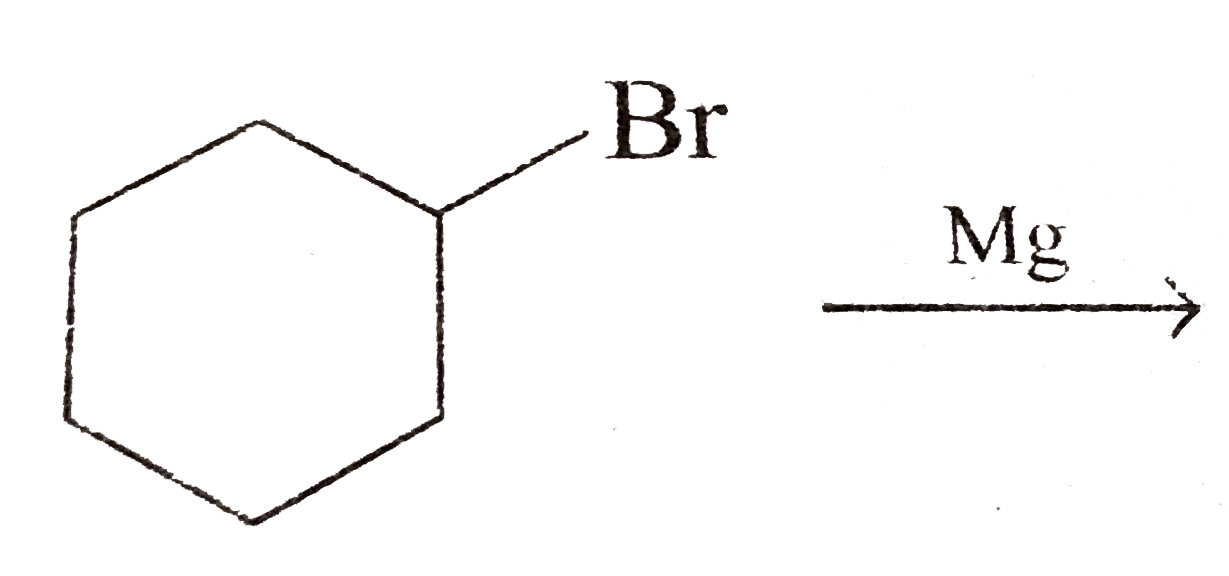Colemanite+Na2CO3Fused−−→(A)+(B)+CO2
(A)Solution+CO2→(B)+Na2CO3
(B)+concHCl→NaCl+(C)Acid
(C)Acid+H2O→(D)Acid
(D)Strong heating−−−−−−−−→(E)
(E)+CuSO4Heated−−−→inflame(F)Blue-coloured compound.
Compound (A) is.
NaBO2
Na2B4O7
Na3BO3
NaOH
The correct Answer is:A
Ca2B6O11Colemanite+2Na2CO3Fused−−→NaBO2Sodiummetaborate+Na2B4O7(B)+2CO2
NaBO2(aq)(A)+CO2→Na2B4O7(B)+Na2CO3
Na2B4O7(B)+HClConc→NaCl+H2B4O7(C)
H2B4O7(C)+5H2O→4H3BO3(D)
2H3BO3(D)Strong−−−→heatingB2O3(E)+3H2O
B2O3(E)+CuSO4Heated in flame−−−−−−−−→Cu(BO2)3(F)Blue coloured compound.
NaBO2.
Topper's Solved these Questions
- P-BLOCK GROUP 13 - BORON FAMILYBook:CENGAGE CHEMISTRYChapter:P-BLOCK GROUP 13 - BORON FAMILYExercise:Exercise (Multiple Correct)
Explore 23 Videos
- P-BLOCK GROUP 13 - BORON FAMILYBook:CENGAGE CHEMISTRYChapter:P-BLOCK GROUP 13 - BORON FAMILYExercise:Exercise (Single Correct)
Explore 86 Videos
- P-BLOCK GROUP 13 - BORON FAMILYBook:CENGAGE CHEMISTRYChapter:P-BLOCK GROUP 13 - BORON FAMILYExercise:Ex 6.1 (Objective)
Explore 14 Videos
- ORGANIC REACTION MECHANISMBook:CENGAGE CHEMISTRYChapter:ORGANIC REACTION MECHANISMExercise:Analytical and Descriptive
Explore 6 Videos
- P-BLOCK GROUP 14 - CARBON FAMILYBook:CENGAGE CHEMISTRYChapter:P-BLOCK GROUP 14 - CARBON FAMILYExercise:Exercises Archives (Subjective)
Explore 9 Videos
Similar Questions
Ca2B6O11+NA2CO3Fusted−−−→(A)+(B)+CaCO3
(A)+CO2→(B)+Na2CO3
(B)+Conc.HCl→NaCl+Acid(C)
(C)Strongly−−−−→heated(D)
(D)+CuSO4Heated−−−→InflameBlue colured(E)Compound
Compound (B) is:
View SolutionCa2B6O11+NA2CO3Fusted−−−→(A)+(B)+CaCO3
(A)+CO2→(B)+Na2CO3
(B)+Conc.HCl→NaCl+Acid(C)
(C)Strongly−−−−→heated(D)
(D)+CuSO4Heated−−−→InflameBlue colured(E)Compound
Compound (A) is :
View Solution
Knowledge Check
Colemanite+Na2CO3Fused−−→(A)+(B)+CO2
(A)Solution+CO2→(B)+Na2CO3
(B)+concHCl→NaCl+(C)Acid
(C)Acid+H2O→(D)Acid
(D)Strong heating−−−−−−−−→(E)
(E)+CuSO4Heated−−−→inflame(F)Blue-coloured compound.
Colemanite is.ACa2B2O11BCa2B6O11CCa4B4O11DCa6B6O11Ca2B6O11+Na2CO3fusion−−→A+B+CaCO3
A(solution)+CO2→B+Na2CO3
B+ConcHCl→NaCl+C(acid)
The correct statement(s) among the following is/are :ACompound A is NaBO2B1 mole of solution of B requires 2 moles of HCl for its complete reactionCCompound C is H2B4O7,DpH of aq solution of B is equal to pKa of acid C when equimolar solutions of B and C are considered.Ca2B6O11+NA2CO3Fusted−−−→(A)+(B)+CaCO3
(A)+CO2→(B)+Na2CO3
(B)+Conc.HCl→NaCl+Acid(C)
(C)Strongly−−−−→heated(D)
(D)+CuSO4Heated−−−→InflameBlue colured(E)Compound
Compound (E) is:ACu2OBCuSCCuSO3DCu(BO2)2
CaC2O4+AcOHNa2CO3−−−−→Solution(X), then X is:
View SolutionNa+Al2O3High temperature−−−−−−−−−→XCO2 in−−−−−−→waterY, compound Y is
View SolutionNa+Al2O3High temp.−−−−−→XCO2 in−−−−→waterY, compound is
View Solution Mg−−→(A)(i)14CO2−−−−−−−−→(ii)H+/H2O(B)NaHCO3−−−−−→(C) gas, product C is :
Mg−−→(A)(i)14CO2−−−−−−−−→(ii)H+/H2O(B)NaHCO3−−−−−→(C) gas, product C is :
View Solutionunderset(("Hydrated salt"))((A))underset("heated")overset("Strongly")rarr ubrace(B+C)_("Transparent glassy bead") H_(2)BO_(3) overset("Strongly")underset("heated")rarr C+D
Identify C :
View Solution
